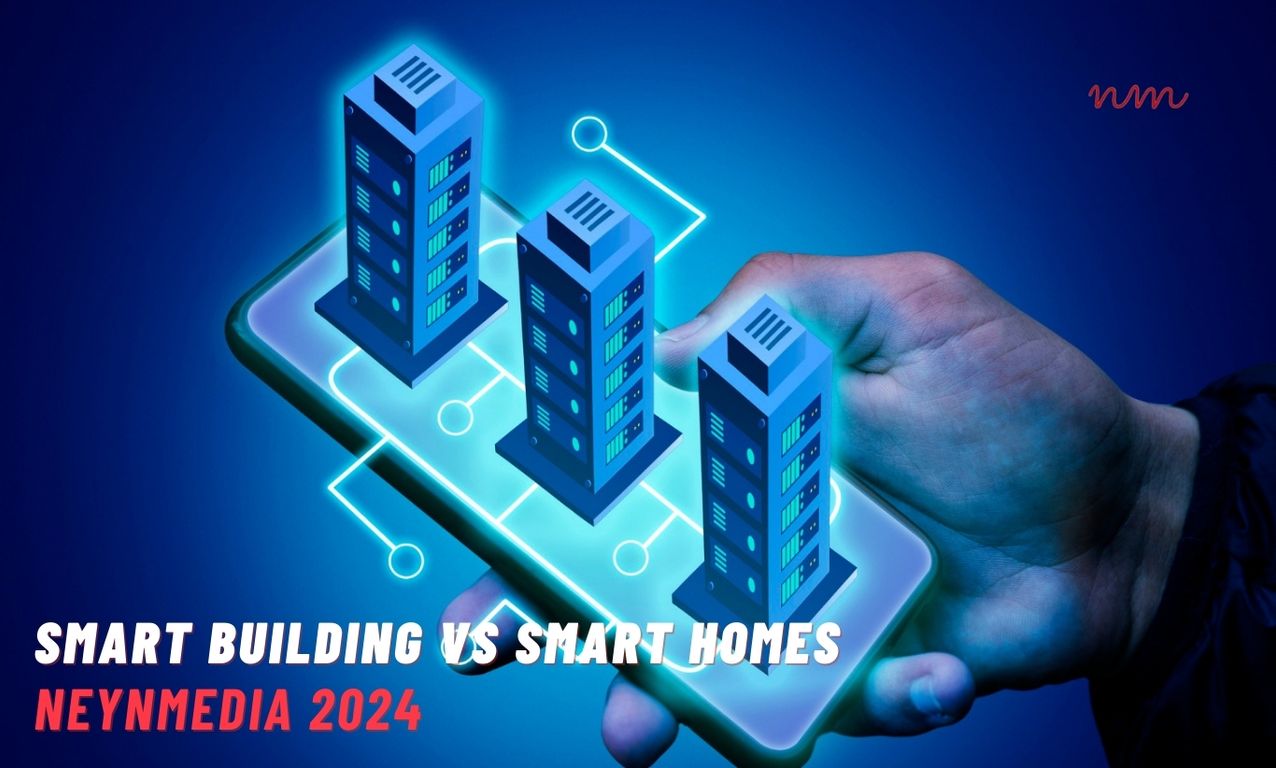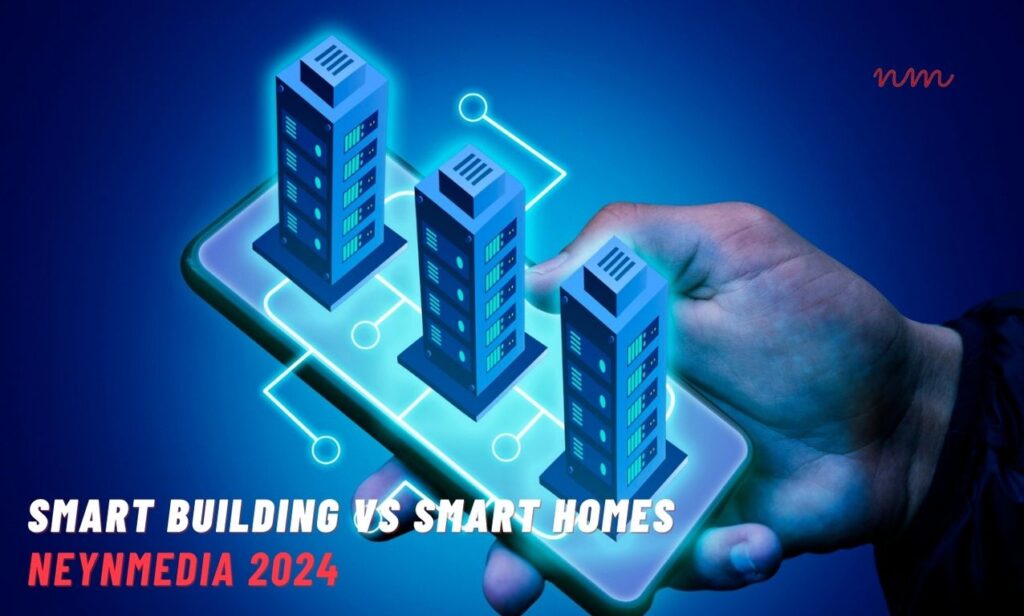Smart Building vs Smart Homes
In the realm of modern technology, the terms Smart Building vs Smart Homes often arise, sparking curiosity and debate. Both concepts encompass the integration of advanced technologies to enhance efficiency, convenience, and sustainability in our living and working spaces. In this blog article, we’ll delve into the fascinating world of smart buildings and smart homes, exploring their similarities, differences, and the strategies that can help you make informed decisions about implementing these technologies.
As a writer with over a decade of experience in exploring the intersection of technology and architecture, I’m excited to share insights and strategies that can help you navigate the smart building vs smart home landscape. I believe that understanding the nuances of each concept and their potential applications can empower you to create spaces that are not only technologically advanced but also tailored to your unique needs and aspirations.
Throughout this article, we’ll explore various aspects of smart buildings and smart homes, including their key features, benefits, challenges, and the latest trends shaping their evolution. Whether you’re a homeowner looking to enhance your living environment or a business owner seeking to optimize your workspace, this blog article will provide valuable information and guidance to help you make informed decisions about smart building and smart home technologies.
Smart Building vs Smart Homes
In the realm of modern architecture and technology, the concepts of smart buildings and smart homes have emerged as transformative forces, redefining the way we live and work. While both share the common goal of integrating technology to enhance efficiency, comfort, and sustainability, they differ significantly in scale, scope, and application.
1. Definition and Scope:
A smart building is a technologically advanced structure that utilizes integrated systems to optimize its operations and enhance occupant well-being. It encompasses a wide range of features, including automated lighting, heating, ventilation, and air conditioning (HVAC) systems, energy management systems, security systems, and advanced communication networks. On the other hand, a smart home is a residential dwelling equipped with similar technologies, but on a smaller scale, primarily focused on improving comfort, convenience, and energy efficiency for its occupants.
2. Connectivity and Integration:
Smart buildings are characterized by their extensive connectivity and integration of various systems. They employ sensors, actuators, and controllers to gather data, monitor conditions, and make real-time adjustments to optimize performance. This level of integration allows for seamless communication between different systems, enabling them to work together harmoniously. In contrast, smart homes typically have a more limited scope of connectivity and integration, primarily focused on automating and controlling individual devices and appliances within the home.
3. Energy Efficiency and Sustainability:
Smart buildings are designed to minimize energy consumption and promote sustainability. They utilize advanced energy management systems that monitor and adjust energy usage based on occupancy, weather conditions, and other factors. Additionally, smart buildings often incorporate renewable energy sources, such as solar panels and wind turbines, to reduce their reliance on traditional energy sources. Smart homes also aim to improve energy efficiency, but their impact is typically limited to the individual household level, whereas smart buildings can have a broader impact on the surrounding community.
4. Security and Safety:
Smart buildings and smart homes both prioritize security and safety. Smart buildings employ advanced security systems, including access control systems, surveillance cameras, and intrusion detection systems, to protect occupants and assets. They may also incorporate fire detection and suppression systems to ensure the safety of occupants in the event of an emergency. Smart homes, while having a smaller scale of security measures, also utilize smart locks, motion sensors, and security cameras to deter crime and provide peace of mind to homeowners.
5. Cost and Implementation:
The cost of implementing smart building technologies can be substantial, as it requires extensive infrastructure upgrades and integration of various systems. However, the long-term benefits in terms of energy savings, operational efficiency, and occupant satisfaction can often justify the initial investment. Smart homes, on the other hand, are typically more affordable to implement, as they involve retrofitting existing homes with smart devices and systems. The cost of smart home technology varies depending on the specific devices and features desired.
In conclusion, smart buildings and smart homes represent the convergence of technology and architecture, offering a glimpse into the future of sustainable and intelligent living. While smart buildings focus on optimizing building operations and occupant well-being on a larger scale, smart homes prioritize comfort, convenience, and energy efficiency within individual residences. As technology continues to advance, the integration of smart technologies in buildings and homes will likely become even more sophisticated, transforming the way we live, work, and interact with our surroundings.

FAQs About Smart Building vs Smart Homes
What are smart buildings?
Smart buildings are structures that use automated processes to control and optimize their building systems, such as heating, ventilation, air conditioning, lighting, and security. They are designed to be more efficient, sustainable, and comfortable for occupants.
What are smart homes?
Smart homes are residences equipped with technology that allows homeowners to control and automate various aspects of their homes, such as lighting, heating, cooling, security, and entertainment systems. They are designed to provide convenience, energy efficiency, and enhanced security.
What are the key differences between Smart Building vs Smart Homes?
The primary difference between smart buildings and smart homes is their scale and purpose. Smart buildings are typically larger structures, such as offices, hospitals, or schools, and are managed by facility managers or building owners. Smart homes, on the other hand, are individual residences owned and managed by homeowners.
What are the benefits of smart buildings?
Smart buildings offer numerous benefits, including improved energy efficiency, reduced operating costs, enhanced occupant comfort, increased security, and better sustainability. They can also facilitate data collection and analysis, enabling building managers to make informed decisions about operations and maintenance.
What are the benefits of smart homes?
Smart homes provide homeowners with convenience, energy savings, enhanced security, and increased comfort. They allow homeowners to control and automate various aspects of their homes, such as lighting, heating, cooling, and entertainment systems, using smartphones, tablets, or voice assistants.
Recent Post:



